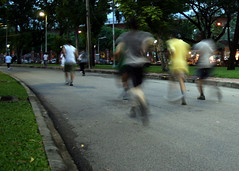 © 2007 Jupiterimages Corporation |
 © 2007 Jupiterimages Corporation |
This National Library of Medicine website helps you find local resources for health-related issues. Select an area from the map shown to search for health services and topics.
Drugs.com provides free, accurate and independent advice on more than 24,000 prescription drug
 © 2007 Jupiterimages Corporation |
pill identification to help you identify that stray pill found in your child's backpack or in your bathroom drawer;
a drug interaction checker that lets you input the list of medications you take, and alerts you to any possible dangerous interactions.
My Family Health Portrait is a web-based tool provided by the U.S. Surgeon General. Information you provide creates a drawing of your family tree and a chart of your family health history.
A personal health record (PHR) is a collection of important information that you maintain about your health or the health of someone you’re caring for, such as a parent or a child. MyPHR.com gives details about what should be included, and suggests free or fee-based resources that help you create a PHR in print form, using the Internet, or using specialized software.
Activities:
- Try out the symptom checker or the pill identifier. Write in general terms about how accurate the results seemed to be.
- Pick any medical condition or service and use the local MedlinePlus to see if there are related resources within 10 miles of your home. List what you found.
- Create a sample family medical history tree. Discuss how this could this be a useful addition to a genealogy study.
HCPL Staff:
Have you completed all five posts in this module? Then Submit your Registration of Completion
This post was brought to you by Nancy Agafitei (CC).










